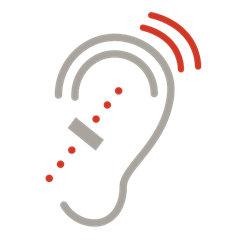
Correct!
Listen Carefully
Languages have their own dynamic sound systems and structures for how meaning is carried. For example, tonal languages may be impacted more by a low frequency hearing loss. Gathering an understanding of how the frequencies of a language influence meaning promotes effective service delivery.
Source: Hearing Loss (Ages 5+) [ASHA Practice Portal]

Incorrect
Listen Carefully
Languages have their own dynamic sound systems and structures for how meaning is carried. For example, tonal languages may be impacted more by a low frequency hearing loss. Gathering an understanding of how the frequencies of a language influence meaning promotes effective service delivery.
Source: Hearing Loss (Ages 5+) [ASHA Practice Portal]
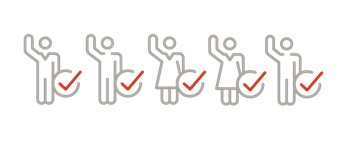
Correct!
Know Your Roles & Responsbilities
When collaborating with interpreters, transliterators, or translators, audiologists and SLPs remain responsible for planning the session, selecting culturally relevant materials, and appropriately administering assessment and treatment.
Source: Collaborating with Interpreters, Transliterators, and Translators [ASHA Practice Portal]

Incorrect
Know Your Roles & Responsbilities
When collaborating with interpreters, transliterators, or translators, audiologists and SLPs remain responsible for planning the session, selecting culturally relevant materials, and appropriately administering assessment and treatment.
Source: Collaborating with Interpreters, Transliterators, and Translators [ASHA Practice Portal]

Correct!
Take the Right Approach
Dynamic assessment (DA) is a widely accepted interactive assessment used in education and in the helping professions. DA seeks to identify the skills an individual already has as well as their learning potential.
Source: Dynamic Assessment [ASHA Website]

Incorrect
Take the Right Approach
Dynamic assessment (DA) is a widely accepted interactive assessment used in education and in the helping professions. DA seeks to identify the skills an individual already has as well as their learning potential.
Source: Dynamic Assessment [ASHA Website]

QUESTION 04
You work in a hospital with a client whose insurance covers services after a mild traumatic brain injury (TBI). They speak with a noticeable Southern U.S. accent. They share that they have always wanted to work on this and ask that you develop goals that would modify their accent in their intervention plan. Can you include such services in your treatment plan, which is billed to insurance?


Correct!
Know Your Limits
It would not be appropriate or legal for an SLP to bill for a full hour of services for TBI while actually spending some percentage of that therapy time for addressing the patient's accent, which is a language difference.
Source: Accent Modification [ASHA Practice Portal]

Incorrect
Know Your Limits
It would not be appropriate or legal for an SLP to bill for a full hour of services for TBI while actually spending some percentage of that therapy time for addressing the patient's accent, which is a language difference.
Source: Accent Modification [ASHA Practice Portal]

QUESTION 05
You are a clinical educator. One of your clinicians speaks English that's influenced by their native language. You receive a phone call from a student's family saying that they don't want this clinician to work with their child. They don't provide any additional information as to why. What is your best next step?

What is necessary to provide effective services?

Correct!
It Isn't About How You Say It
There is no research to support the belief that audiologists and SLPs whose dialect/accent is different than mainstream English are unable to make appropriate diagnostic decisions or achieve appropriate treatment outcomes. Clinicians need to be able to discriminate speech sounds as well as provide a model during stimulation. Models can be provided by the clinicians themselves or via an alternate means (e.g., a pre-recorded message).
Source: Students and Professionals Who Speak English with Accents and Nonstandard Dialects: Issues and Recommendations [ASHA Policy]

Incorrect
It Isn't About How You Say It
There is no research to support the belief that audiologists and SLPs whose dialect/accent is different than mainstream English are unable to make appropriate diagnostic decisions or achieve appropriate treatment outcomes. Clinicians need to be able to discriminate speech sounds as well as provide a model during stimulation. Models can be provided by the clinicians themselves or via an alternate means (e.g., a pre-recorded message).
Source: Students and Professionals Who Speak English with Accents and Nonstandard Dialects: Issues and Recommendations [ASHA Policy]

Correct!
You Don't Know What You Don't Know
Gender is not something that can be determined by appearance, nor is it binary. Additionally, it's important that we create safe spaces to generate trust so that individuals can feel secure in sharing their names and pronouns with you.
Source: Supporting and Working with Transgender and Gender-Diverse Individuals [ASHA Website]
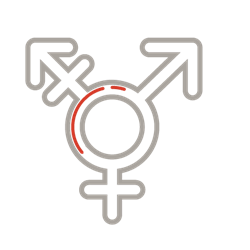
Incorrect
You Don't Know What You Don't Know
Gender is not something that can be determined by appearance, nor is it binary. Additionally, it's important that we create safe spaces to generate trust so that individuals can feel secure in sharing their names and pronouns with you.
Source: Supporting and Working with Transgender and Gender-Diverse Individuals [ASHA Website]

Correct!
It's a Great First Step, But Not All You Need
Working cross-linguistically or cross-culturally is a skill that we develop over time. Language, just like people, is dynamic and changes over time—and it varies for each individual we encounter. Learning sound systems and phonemic inventories is a great way to start, but there is a lot more to providing culturally responsive services.
Source: Bilingual Service Delivery [ASHA Practice Portal]

Incorrect
It's a Great First Step, But Not All You Need
Working cross-linguistically or cross-culturally is a skill that we develop over time. Language, just like people, is dynamic and changes over time—and it varies for each individual we encounter. Learning sound systems and phonemic inventories is a great way to start, but there is a lot more to providing culturally responsive services.
Source: Bilingual Service Delivery [ASHA Practice Portal]
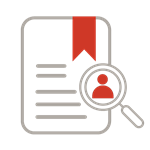
Case Study Part 1
It's critical to build foundational knowledge, but it's important to know how to apply this knowledge to a clinical encounter.
Let's try a case study to see what you'd do. Following is information that you receive on an intake form.
Intake Details
A client, J, contacts your office due to concerns about their language abilities. Based on your background interview, you discover that J came to the United States 7 years ago when they were 12. Spanish is spoken in the home and community. Parents and peers are always saying that it takes "too long" to talk to J. J feels frustrated and unheard. English is the language spoken at work. J's boss tells them that they need to learn English better and suggests ESL classes. J has been written up twice for misunderstanding directions.
QUESTION 08
You search for a bilingual service provider and are unable to locate one in the area. Which of the following is the next best step?

Don't ignore language and identity.

Correct!
Get By with Some Help from Collaborators
Equitable services to all populations should be provided regardless of language spoken. A language match is ideal, but not always possible. This means developing a support system and a shared understanding for how to collaborate with interpreters.
Source: Collaborating with Interpreters, Transliterators, and Translators [ASHA Practice Portal]

Incorrect
Get By with Some Help from Collaborators
Equitable services to all populations should be provided regardless of language spoken. A language match is ideal, but not always possible. This means developing a support system and a shared understanding for how to collaborate with interpreters.
Source: Collaborating with Interpreters, Transliterators, and Translators [ASHA Practice Portal]
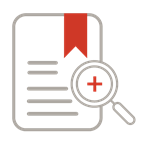
Case Study Part 2
Intake Form Details
A client, J, contacts your office due to concerns about their language abilities. Based on your background interview, you discover that J came to the United States 7 years ago when they were 12. Spanish is spoken in the home and community. Parents and peers are always saying that it takes "too long" to talk to J. J feels frustrated and unheard. English is the language spoken at work. J's boss tells them that they need to learn English better and suggests ESL classes. J has been written up twice for misunderstanding directions.
QUESTION 09
You have located and trained an interpreter to help you with the assessment process. Which one of the following is not appropriate to include in your evaluation?

One size does not always fit all.

Correct!
The Numbers Don't Always Add Up
Reporting scores from standardized assessments that have been translated from English into an additional language is not appropriate. While some assessments are available in different languages, standard scores may not be available for all speakers. Because standardized tests are not sensitive to all dialects within any language, think beyond them. Learn more about the linguistic features of the languages and dialects used. Collect information using alternate approaches, such as dynamic assessment, ethnographic interviewing, language sample analysis, and clinical observation to inform decision making.
Source: Bilingual Service Delivery [ASHA Practice Portal]

Incorrect
The Numbers Don't Always Add Up
Reporting scores from standardized assessments that have been translated from English into an additional language is not appropriate. While some assessments are available in different languages, standard scores may not be available for all speakers. Because standardized tests are not sensitive to all dialects within any language, think beyond them. Learn more about the linguistic features of the languages and dialects used. Collect information using alternate approaches, such as dynamic assessment, ethnographic interviewing, language sample analysis, and clinical observation to inform decision making.
Source: Bilingual Service Delivery [ASHA Practice Portal]

Case Study Part 3
Intake Form Details
A client, J, contacts your office due to concerns about their language abilities. Based on your background interview, you discover that J came to the United States 7 years ago when they were 12. Spanish is spoken in the home and community. Parents and peers are always saying that it takes "too long" to talk to J. J feels frustrated and unheard. English is the language spoken at work. J's boss tells them that they need to learn English better and suggests ESL classes. J has been written up twice for misunderstanding directions.
QUESTION 10
Great job! You are almost there.
Upon evaluation and consideration of all collected data, you note that J has a moderate language disorder in Spanish. The impact is even more significant in English. You determine that speech and language intervention is required.
Here's the last question: For the treatment plan, which language(s) must be addressed in intervention?

It's all in a day's work.

Incorrect
It's Not Always Black or White
Culturally relevant services focus on clients' day-to-day needs because we want to help them communicate. How frequently or infrequently each language is used during treatment sessions will vary. Overall, the plan should assist in making improvements in communication and addressing disorders that exist in both languages.
Source: Bilingual Service Delivery [ASHA Practice Portal]



